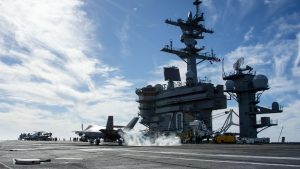
Raytheon Technologies [RTX] delivered the first Low-Rate Initial production (LRIP) Joint Precision Approach and Landing System (JPALS) units months ahead of schedule, the company said during a quarterly earnings call on Jan. 25. “Through strong program execution in [Raytheon Intelligence and Space], the Joint Precision Approach and Landing System program completed delivery on the first LRIP units 60 days ahead of schedule. This achievement has given the Navy the confidence to certify JPALS on the CVN carrier and two amphibious…

 By
By 











